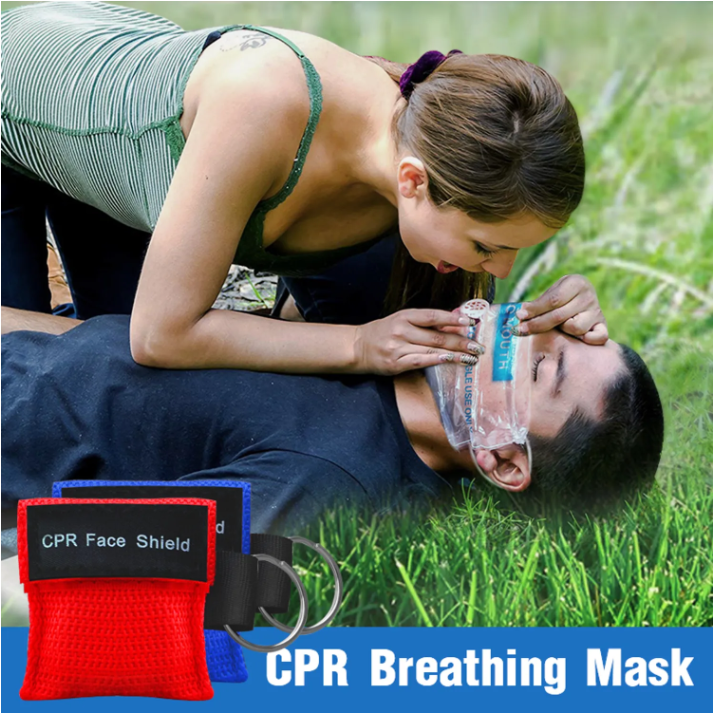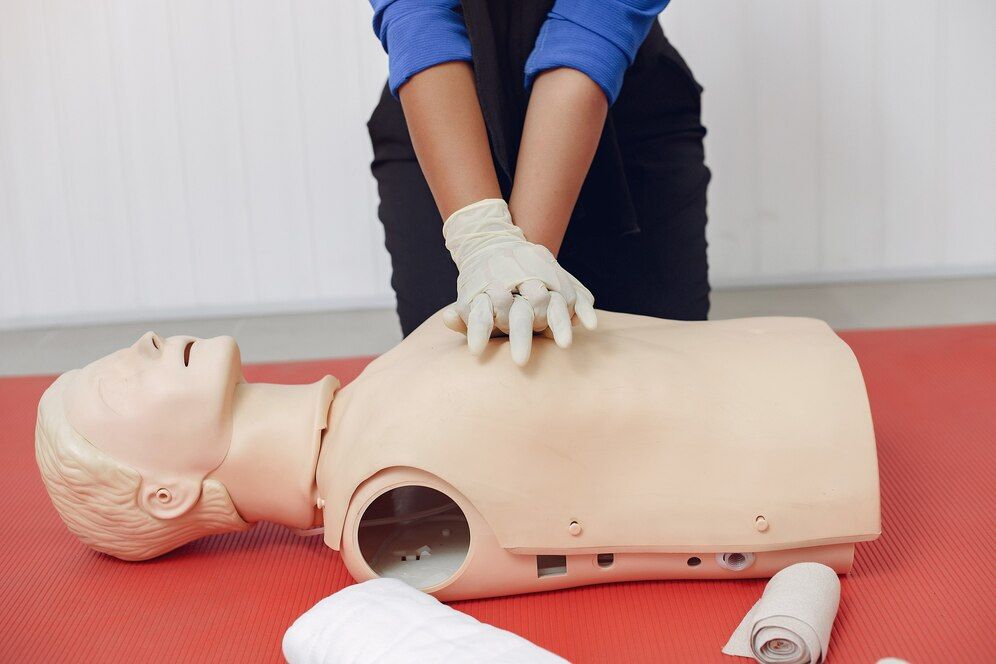
GET A QUOTE
How Do You Use a CPR Breathing Mask?
Cardiopulmonary resuscitation (CPR) is a life-saving technique essential in emergencies like cardiac arrest or drowning. A crucial component of effective CPR is the use of a CPR breathing mask. These masks not only protect the rescuer from potential infectious diseases but also provide a more efficient way to deliver rescue breaths. In this blog post, we will delve into the importance of CPR breathing masks and provide a detailed guide on how to use a CPR breathing mask correctly.
What is a CPR Breathing Mask?
Understanding the Basics
A CPR breathing mask, also known as a pocket mask or face shield, is a device used to safely deliver rescue breaths during CPR. It consists of a one-way valve and a face seal that covers the victim's nose and mouth. The one-way valve prevents the rescuer from coming into contact with the victim's exhaled air, thereby minimizing the risk of cross-contamination.
Importance of Using a CPR Breathing Mask
Using a CPR breathing mask significantly enhances the effectiveness of rescue breaths. It creates a secure seal around the victim's mouth and nose, ensuring that the breaths delivered go directly into the lungs. This is crucial in maintaining oxygen flow to the brain and vital organs during a cardiac arrest, increasing the victim's chances of survival.
How Do You Use a CPR Breathing Mask?
Using a CPR breathing mask might seem daunting at first, but with the right technique, it can be straightforward. Here is a detailed step-by-step guide on how to use a CPR breathing mask:
Step1. Ensure Safety
Before approaching the victim, make sure the scene is safe. Check for any hazards that could pose a risk to you or the victim. Once the area is secure, put on gloves if available to further reduce the risk of contamination.
Step2. Assess the Victim
Check if the victim is responsive. Tap their shoulder and shout to see if there is any reaction. If there is no response, check for breathing. Look for chest movement, listen for breath sounds, and feel for breath on your cheek.
Step3. Call for Help
If the victim is unresponsive and not breathing, call emergency services immediately. If possible, ask a bystander to make the call while you start CPR.
Step4. Position the Mask
Place the CPR breathing mask over the victim's nose and mouth. Ensure that the one-way valve is positioned correctly. The mask should create a secure seal over the face.
Step5. Deliver Rescue Breaths
With the mask in place, tilt the victim's head back slightly to open the airway. Pinch the nose closed and take a deep breath. Place your mouth over the mask's valve and blow steadily into the mask, watching for the victim's chest to rise. Give two rescue breaths, each lasting about one second.
Step6. Continue CPR
After delivering the rescue breaths, proceed with chest compressions. Place your hands in the center of the victim's chest and push hard and fast at a rate of 100-120 compressions per minute. Alternate between 30 chest compressions and two rescue breaths until help arrives or the victim starts breathing normally.
Tips for Effective Use of a CPR Breathing Mask
Ensure a Proper Seal
A proper seal between the mask and the victim's face is crucial for effective rescue breaths. Make sure there are no gaps where air could escape. Practice using the mask on a manikin to become comfortable with creating a secure seal.
Use a Barrier Device
If a CPR breathing mask is not available, a barrier device such as a face shield can be used. These are compact, portable, and provide a protective barrier between the rescuer and the victim.
Practice Regularly
Regular practice is key to being prepared in an emergency. Attend CPR training sessions and refresher courses to keep your skills sharp. Many training programs provide hands-on practice with CPR breathing masks, ensuring you are confident in using the device.
Why Every Rescuer Should Carry a CPR Breathing Mask
Portability and Convenience
CPR breathing masks are compact and easy to carry. They can be attached to a keychain, stored in a first aid kit, or kept in your car. This portability ensures that you are always prepared to provide effective rescue breaths, no matter where you are.
Enhanced Safety
Using a CPR breathing mask enhances safety for both the rescuer and the victim. The one-way valve prevents direct contact with bodily fluids, reducing the risk of transmission of infectious diseases.
Increased Effectiveness
Rescue breaths delivered through a CPR breathing mask are more effective than those given without a barrier. The secure seal ensures that the air goes directly into the lungs, improving the victim's chances of survival.
Conclusion
Knowing how to use a CPR breathing mask is a vital skill that can save lives. These masks provide a safe and effective way to deliver rescue breaths, ensuring that the victim receives the necessary oxygen during a cardiac emergency. By following the steps outlined in this guide and practicing regularly, you can be prepared to respond confidently in an emergency situation. Always carry a CPR breathing mask and be ready to act – you never know when you might be called upon to save a life.
For those looking to equip themselves with high-quality emergency and first aid supplies, consider RisenMedical. As a premier manufacturer of emergency and first aid kits, RisenMedical offers a comprehensive range of products designed to meet the needs of both professionals and everyday individuals. Their kits include essential items like CPR breathing masks, gloves, and other lifesaving tools, ensuring you are prepared for any emergency. Visit RisenMedical today to explore their extensive range of products and take the first step towards being a confident, capable responder in any emergency situation.
FAQs About Using a CPR Breathing Mask
How Do You Clean a CPR Breathing Mask?
Cleaning a CPR breathing mask is essential for maintaining hygiene. After use, clean the mask with soap and water or a disinfectant solution. Rinse thoroughly and allow it to air dry. Some masks are designed for single use, while others are reusable. Always follow the manufacturer's instructions for cleaning and maintenance.
Can You Use a CPR Breathing Mask on a Child?
Yes, CPR breathing masks can be used on children. Most masks are designed to fit both adults and children. For infants, some masks come with a smaller size or an adapter to ensure a secure fit. When using the mask on a child or infant, be gentle and use smaller breaths to avoid overinflation of the lungs.
What If the Victim Vomits During CPR?
If the victim vomits during CPR, turn their head to the side to clear the airway. Wipe away any vomit and resume CPR. If using a CPR breathing mask, remove the mask, clean it if possible, and continue providing rescue breaths and chest compressions.


